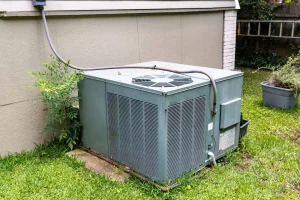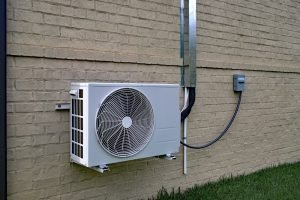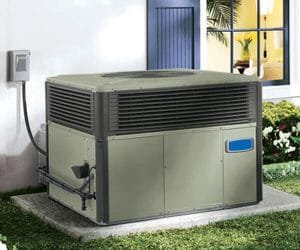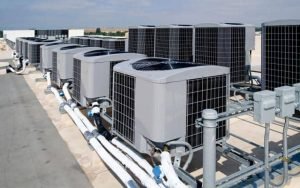
In today’s rapidly advancing world of technology, comfort, heating, ventilation, and air conditioning (HVAC) systems play a vital role in maintaining optimal indoor environments. From residential homes to large commercial spaces, these 4 basic categories of HVAC systems are designed to regulate temperature, ensure proper airflow, and enhance overall comfort.
As we delve into the realm of HVAC technology, it becomes apparent that these systems such as split systems, hybrid systems, ductless systems, and packaged systems can be classified into four fundamental categories, each serving distinct purposes and tailored to specific applications.
In this article, we will embark on a journey to unravel the intricacies of these 4 basic categories of HVAC systems, shedding light on their functionalities, advantages, and ideal use cases. Whether you’re a homeowner, a business owner, or simply curious about HVAC technology, this article will provide valuable insights into the heart of indoor climate control.

Generate More HVAC & Plumbing Leads with a Free 3-Week SEO Trial!
Ready to get more calls and customers for your HVAC or Plumbing business?
HVAC Marketing Xperts is offering contractors like you a LIMITED free SEO audit and a 1-on-1 marketing consultation tailored to your HVAC or plumbing business.
Our proven local SEO lead generation system is risk-free for 3 weeks (you pay nothing for three weeks of GBP and SEO services)!
Let’s grow your business together—click the button below to start now and claim the TIME-LIMITED offer.
The Four Basic Categories of HVAC Systems
HVAC (Heating, Ventilation, and Air Conditioning) systems play a pivotal role in maintaining indoor comfort and air quality in various environments, from homes to commercial spaces.
These systems can be classified into four fundamental categories, each designed to fulfill specific heating, cooling, and air circulation needs. Understanding these categories provides a foundational overview of HVAC technology and its applications.
Let’s explore the Four Basic Categories of HVAC Systems:
Split Systems

A split system HVAC is a type of heating and cooling system that consists of two main components known as an indoor unit and an outdoor unit. These units are connected by refrigerant lines that facilitate the transfer of heat.
The indoor unit includes the evaporator coil, blower, and air filter, while the outdoor unit contains the condenser coil and compressor. In cooling mode, the indoor unit absorbs heat from the indoor air, and the outdoor unit releases it to the outside. In heating mode, the process is reversed, with the indoor unit releasing heat into the indoor air.
Functionality and Applications:
Split systems are widely used in residential and small commercial spaces. They provide efficient cooling and heating by transferring heat between the indoor and outdoor units. The indoor unit circulates the conditioned air through the space, ensuring consistent comfort levels.
Split systems are versatile and can be configured as air conditioners or heat pumps, which offer both heating and cooling capabilities. They are suitable for individual rooms or open-plan areas, making them a popular choice for bedrooms, living rooms, offices, and small retail spaces.
Advantages and Disadvantages:
Advantages:
Disadvantages:
Packaged Systems

Packaged systems are comprehensive HVAC units that house all essential components for heating, cooling, and sometimes ventilation in a single, compact unit. Unlike split systems that have separate indoor and outdoor components, packaged systems are self-contained and typically installed outdoors or on rooftops.
These units are designed to efficiently condition air and maintain indoor comfort in a variety of settings, ranging from homes to commercial buildings.
Types within Packaged Systems
There are several types of packaged systems, each catering to specific needs and applications:
Pros and Cons:
Pros:
Cons:
Ductless Mini-Split Systems

Ductless mini-split systems, also known as ductless heat pumps or ductless air conditioners, are HVAC systems designed to provide both heating and cooling without the need for traditional ductwork. These systems consist of an outdoor condenser unit and one or more indoor air-handling units, which are often mounted on walls or ceilings in individual rooms or zones.
So, the indoor and outdoor units are connected by refrigerant lines, allowing the transfer of heat between them. Ductless mini-split systems are known for their flexibility, energy efficiency, and targeted comfort control.
Benefits in Specific Scenarios
Ductless mini-split systems offer several advantages in specific scenarios:
Considerations for Installation
When considering the installation of ductless mini-split systems, there are several important factors to keep in mind:
Hybrid Systems

Hybrid HVAC systems, also known as dual-fuel systems, are innovative solutions that combine two different heating technologies to optimize energy efficiency and cost savings. These systems typically integrate a traditional fuel-based heating source, such as a furnace or boiler, with an electric-powered heat pump.
The hybrid system intelligently selects the most efficient heating source based on outdoor conditions and energy costs, ensuring optimal performance and comfort.

Generate More HVAC & Plumbing Leads with a Free 3-Week SEO Trial!
Ready to get more calls and customers for your HVAC or Plumbing business?
HVAC Marketing Xperts is offering contractors like you a LIMITED free SEO audit and a 1-on-1 marketing consultation tailored to your HVAC or plumbing business.
Our proven local SEO lead generation system is risk-free for 3 weeks (you pay nothing for three weeks of GBP and SEO services)!
Let’s grow your business together—click the button below to start now and claim the TIME-LIMITED offer.
Combination of Technologies
Hybrid systems combine the following technologies:
The hybrid system utilizes the heat pump for heating during milder weather when it’s more energy-efficient, and switches to the furnace or boiler when outdoor temperatures drop significantly, ensuring effective heating performance even in extreme cold conditions.
Energy Efficiency and Cost Savings
Hybrid HVAC systems offer notable energy efficiency and cost-saving benefits:
It’s important to note that the effectiveness of a hybrid system depends on factors such as climate, energy prices, and system sizing. Proper installation, system setup, and regular maintenance by a qualified HVAC professional are crucial for maximizing the benefits of a hybrid HVAC system.
Factors to Consider When Choosing an HVAC System

Choosing the right HVAC system for your needs involves careful consideration of several factors to ensure optimal comfort, energy efficiency, and cost-effectiveness. Here are key factors to keep in mind:
Climate and Region:
The climate and region you live in significantly impact your HVAC needs. Consider the following:
Energy Efficiency Ratings
Energy efficiency is crucial for cost savings and environmental impact:
Initial Installation and Long-Term Maintenance Costs
Balancing upfront costs with long-term savings is important:
Space and Layout Considerations
Your building’s layout affects the HVAC system choice:
These factors provide a foundation for informed decision-making. It’s essential to assess your unique needs, preferences, and budget constraints when selecting an HVAC system. Consulting with HVAC professionals can help ensure you make the right choice for your specific circumstances.

Generate More HVAC & Plumbing Leads with a Free 3-Week SEO Trial!
Ready to get more calls and customers for your HVAC or Plumbing business?
HVAC Marketing Xperts is offering contractors like you a LIMITED free SEO audit and a 1-on-1 marketing consultation tailored to your HVAC or plumbing business.
Our proven local SEO lead generation system is risk-free for 3 weeks (you pay nothing for three weeks of GBP and SEO services)!
Let’s grow your business together—click the button below to start now and claim the TIME-LIMITED offer.
Conclusion
The 4 basic categories of HVAC systems known as the Split Systems, Packaged Systems, Ductless Mini-Split Systems, and Hybrid Systems offer diverse solutions to meet varying heating, cooling, and air circulation needs.
Each category presents distinct advantages and considerations, allowing for tailored choices based on factors such as space, climate, energy efficiency, and budget. By understanding these fundamental categories, individuals and businesses can make informed decisions to achieve optimal indoor comfort and environmental sustainability.
Latest Posts
- Construction Names Master Guide: MasterFormat, UniFormat, BIM & ISO Naming Standards ExplainedEvery time an HVAC or plumbing contractor downloads a set of architectural drawings you’re looking at silent code. The code lives inside every sheet note, material legend, schedule, and BIM object you see. It tells the project manager which chillers go on level 03, signals the estimator where the wet-side piping connects to the riser,… Read more: Construction Names Master Guide: MasterFormat, UniFormat, BIM & ISO Naming Standards Explained
- 2000 Words to Pages: Ultimate 2026 Guide with Quick Calculator & Formatting Examples“How many pages is 2 000 words, anyway?” – it’s a deceptively simple question that haunts college students pulling an all-nighter, copywriters racing client deadlines, and bloggers trying to stay on Google’s good side. In 2026 the answer is both easier and trickier than ever: easier because modern calculators convert “2000 words to pages” in… Read more: 2000 Words to Pages: Ultimate 2026 Guide with Quick Calculator & Formatting Examples
- Share a Facebook Post to Instagram Like a Pro: The 2025 Complete Guide to Instant Crossposting, Scheduling, and TroubleshootingRead this before you tap that “Share” button: Whether you’re a seasoned HVAC contractor trying to squeeze every ounce of ROI from your social channels or a marketing manager juggling three tool-belts worth of platforms, there’s one rule of thumb—start with a specialist. HVAC Marketing Xperts (HMX) has spent the last decade perfecting the art… Read more: Share a Facebook Post to Instagram Like a Pro: The 2025 Complete Guide to Instant Crossposting, Scheduling, and Troubleshooting
- 150+ Unique Agriculture Company Names: Expert Strategies, Inspiring Examples & Free Name GeneratorEvery year thousands of hopeful founders till the entrepreneurial soil, sowing ideas and dreams in search of the next bumper crop. Yet, before the first seed is dropped into the ground, one question looms larger than soil tests, financing, or tractors: what will you name the company? A brilliant farm-tech platform, a boutique honey brand,… Read more: 150+ Unique Agriculture Company Names: Expert Strategies, Inspiring Examples & Free Name Generator
- Ultimate Roofer Marketing Masterclass 2026: Dominate SEO, Ads, and Automation to Generate 100+ Roofing Leads per MonthRoofing leads are the lifeblood of every contractor, yet 2026 feels like a knife-edge moment: AI-powered search is rewriting local intent, paid ads are auctioning higher than copper, and homeowners now expect Amazon-speed responses with Netflix-style personalisation. Welcome to the “Ultimate Roofer Marketing Masterclass 2026”—a no-fluff blueprint built by HVAC Marketing Xperts (HMX) to help… Read more: Ultimate Roofer Marketing Masterclass 2026: Dominate SEO, Ads, and Automation to Generate 100+ Roofing Leads per Month
- HVAC Companies in 2026: The Ultimate Playbook for Innovation, Sustainability, Digital Transformation & Market LeadershipPicture the typical living room in January 2026. The thermostat on the wall is no longer a passive dial; it is an AI-enabled hub that predicts weather anomalies, pre-cools or pre-heats rooms based on the occupants’ daily routines, and tells the utility when to purchase carbon-neutral energy. A service alert pops up on the homeowner’s… Read more: HVAC Companies in 2026: The Ultimate Playbook for Innovation, Sustainability, Digital Transformation & Market Leadership
- Best Background Color for Website Success in 2026: Data-Driven Guide to UX, Branding & ConversionsChoosing the best background color for website success in 2026 is no longer a question of “blue or white?”—it’s a high-stakes, data-first decision measured in milliseconds of page speed, fractions of a conversion rate, and micro-moments of brand affinity. At HVAC Marketing Xperts (HMX) we obsess over these numbers because they translate straight into phone… Read more: Best Background Color for Website Success in 2026: Data-Driven Guide to UX, Branding & Conversions
- Architecture Firm Names: 1,000+ Winning Ideas, Proven Branding Strategies & a Step-by-Step Naming Blueprint for 2026Architecture firms live or die by perception. Your renderings may be sharp, your Revit files immaculate, your LEED scores off the charts, yet none of that matters if prospects can’t remember who you are. That’s why the seemingly simple task of choosing architecture firm names ends up feeling like design charrette + brand therapy +… Read more: Architecture Firm Names: 1,000+ Winning Ideas, Proven Branding Strategies & a Step-by-Step Naming Blueprint for 2026
- Amazon Slogan: Origin, Meaning, Evolution — Why “Work Hard. Have Fun. Make History.” Still Defines the BrandAmazon’s three-line rallying cry — “Work Hard. Have Fun. Make History.” — is one of the clearest, most repeatable examples of a corporate slogan that is short, memetic, and loaded with cultural signal. If you type the phrase “amazon slogan” into a search bar you’ll find it paired to stories about Jeff Bezos, leadership principles,… Read more: Amazon Slogan: Origin, Meaning, Evolution — Why “Work Hard. Have Fun. Make History.” Still Defines the Brand
- Have It Your Way Slogan: The Definitive History, Trademark Battles, Iconic Campaigns, and 10 Marketing Lessons for Modern BrandsThe Definitive Story of the “Have It Your Way” Slogan ‘have it your way slogan’ is more than a three- or four-word hook; it’s a case study in consumer psychology, brand positioning, and the life cycle of a tagline. The phrase entered pop-culture as a promise of customization and consumer control; it became shorthand for… Read more: Have It Your Way Slogan: The Definitive History, Trademark Battles, Iconic Campaigns, and 10 Marketing Lessons for Modern Brands
- Ad Agencies Minneapolis: 2026 Definitive Guide to the Top Creative, Digital & Full-Service FirmsEvery year the Twin Cities churn out more award-winning campaigns than most metro areas twice their size. 2026 is already shaping up to be another banner year, and “ad agencies Minneapolis” is a search phrase that business owners—from scrappy HVAC contractors to Fortune 500 retailers—are typing into Google in record numbers. If that’s you, buckle… Read more: Ad Agencies Minneapolis: 2026 Definitive Guide to the Top Creative, Digital & Full-Service Firms
- How Long Is 300 Words? Visual Examples, Reading Time & Real Content SamplesPeople hear the phrase “300 words” all the time — in schools, content briefs, business proposals, SEO guidelines, marketing plans, and even short landing pages. Yet most people don’t actually know how long 300 words really is. Is it a lot? Is it hardly anything? Is it one paragraph, two paragraphs, or a full page?… Read more: How Long Is 300 Words? Visual Examples, Reading Time & Real Content Samples
- All You Need to Know About Home Service SEOHome service SEO in 2026 centers on local search optimization, Google Business Profile management, technical website improvements, and content strategies that attract homeowners actively searching for HVAC, plumbing, electrical, and other home services. Approximately 46% of all Google searches have local intent, making SEO the most cost-effective marketing channel for contractors serving specific geographic areas.… Read more: All You Need to Know About Home Service SEO
- How to Grow Your HVAC Business Like a ProGrow your HVAC business in 2026 by focusing on improving online visibility through local SEO and digital marketing, building strategic partnerships, improving operational efficiency, and diversifying service offerings to capture more market share. The HVAC industry projects growth to $383 billion by 2030, with increasing demand creating opportunities for contractors who implement systematic growth strategies.… Read more: How to Grow Your HVAC Business Like a Pro
- 7 HVAC Marketing Strategies to Get Quality Leads in 2025The 7 HVAC marketing strategies to get quality leads in 2025 include local SEO optimization, Google Ads campaigns, online review management, content marketing, social media advertising, email automation, and customer referral programs. These proven tactics help contractors dominate their markets as the HVAC industry grows toward $383 billion by 2030, with increasing competition for every… Read more: 7 HVAC Marketing Strategies to Get Quality Leads in 2025
- HVAC Marketing in 2025: Proven Tactics to Stay Ahead of the CompetitionOur HVAC marketing guide for 2025 shares proven strategies to dominate local search, generate exclusive leads, and grow revenue through Google Ads, SEO, and social media tactics. The HVAC industry reached $249 billion in 2024 and projects growth to $383 billion by 2030, creating massive opportunities for contractors who implement effective digital marketing strategies. Marketing… Read more: HVAC Marketing in 2025: Proven Tactics to Stay Ahead of the Competition











